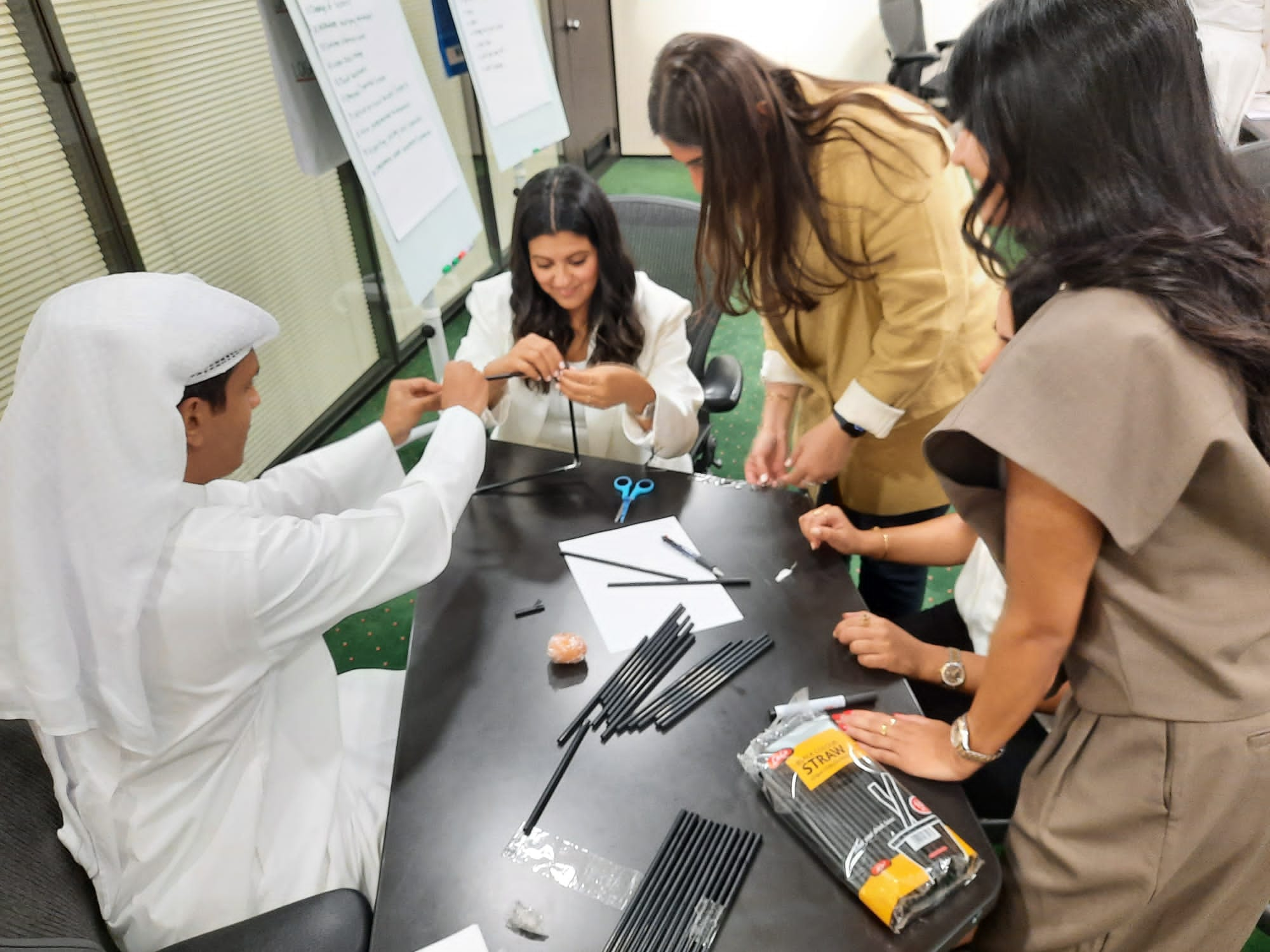Disrupting comfort zones
For Organisations Only
In-house training
- Face-to-face (flexible structure <15 people)
- Live virtual (flexible structure <15 people)
- Conferences and events (<500 people)
- Webinar (1hr introduction <1000 people)
- With or without actors
- Fully customisable
Disrupting Comfort Zones and Leading Change – 2 Days
Many organisations have cultural norms that act as barriers to things like creativity, inclusion, and innovation. There are many studies that show where organisations are very hierarchical, or where there is a cultural fear of failure, then creativity and innovation are hindered.
During this two-day course, we will explore what our own comfort zones look like and the value of moving out of comfort zones for our personal growth and leadership success. We will consider how, as leaders, we can role model a growth mindset and influence the systems, culture, and behaviours around us to create a more creative and innovative working environment.
Course Content
What does my cultural comfort zone look like?
This activity explores our individual cultural comfort zones. As a group we reflect on our personal world view, what that’s influenced by, and how has it evolved overtime. Defining our own comfort zones starts with self-awareness. Using a collection of statements to guide us, we begin to identify our personal comfort zones. Exploring the comfort zone map, we build a collective understanding cultural comfort zones.
Making the move from comfort to growth
It’s normal to get stuck in a comfort zone – it’s why they’re comfortable. But, if we don’t engage in new experiences, we don’t gain new perspectives. Embracing discomfort is a critical step in growth, change, and moving forward. We review several steps each of us can take to move from comfort, through fear, into action and growth.
Leaders role in encouraging growth and driving organisational change
Understanding how we can foster our own growth mindset is the first critical step to encouraging growth and driving organisational change. Leaders have a responsibility to help define, role model, measure, and reward the culture they want to encourage.
Through group discussion and a reflective activity, we define the role of a leader and role modelling a growth mindset and creating space for experimentation, failure, and evolution. These are the key factors in driving creative and innovative change.
Influencing and engaging others as a leader
The role of leadership in driving change is to invite people into your vision as a leader for the organisation. We consider how leaders can increase their influence through collaboration, building connections, and understanding the needs, motivations, and values of others.
Tools for influencing systems, culture, and behaviour
We finish the session by identifying practical tools and techniques. Thinking forward we discuss actionable steps, and tangible measures to influence our environments and challenge the status quo.
Let's get started...
Contact us with your availability for a call and we will send you a proposal, programme outline and quotation for your learning and development project.
Use Actors in Your Training
Through clever script writing, goose-bump inducing delivery and professional facilitation we can bring so much to life. We stimulate emotion, penetrate the long-term memory and create lasting change.
When we use live drama, we are able to have the actors play out the scenario and then be hot seated for the audience to ask them questions whilst they remain in character. Hot seating works so well because actors work with a pre-rehearsed backstory, so they are able to respond in character. They progressively reveal unexpected elements of their story that will not have previously been told. It can bust assumptions that the audience might have made based on the scenario (situation) but not fully understanding the impact at first sight.
Using actors in this programme enables us to bring to:
- See a typical situation from a different perspective
- Give attendees a chance to challenge the actors whilst they are still in character
- Demonstrate that things aren’t always what they seem at first glance
- Provide delegates with an opportunity to test out alternative ways of approaching different situations
- Create an experience which stays in the long-term memory
Case Study

Kuwait Fund for Arab Economic Development
Upskilling engineering architectural and bio-medical graduates“I want to take the chance to thank you again for this wonderful course, it’s been my absolute pleasure and honour to be trained by you. I honestly learned a lot during this week, I hope we will keep in touch.”
READ CASE STUDY